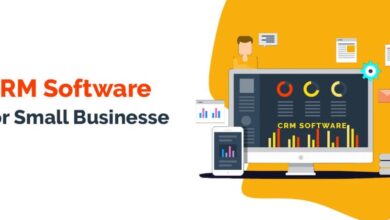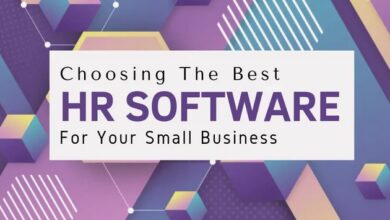Roadmap for Growth with Business Performance Software

In the ever-evolving landscape of business, staying competitive and achieving sustainable growth are top priorities for companies across industries. In today’s digital age, harnessing the power of technology is indispensable for unlocking new avenues of success. One such instrumental tool is Business Performance Software, a dynamic solution designed to optimize operations, enhance efficiency, and drive overall growth. In this article, we will explore the key components of a roadmap for leveraging Business Performance Software to propel your business forward.
Understanding the Essence of Business Performance Software
Before delving into the roadmap, it’s crucial to comprehend the essence of Business Performance Software. This versatile technology integrates various applications and processes to streamline operations, monitor key performance indicators (KPIs), and facilitate data-driven decision-making. By providing a unified platform for data analysis, reporting, and planning, Business Performance Software empowers businesses to gain insights into their performance, identify areas for improvement, and make informed strategic decisions.
1. Define Your Business Objectives and KPIs
The journey towards growth begins with a clear understanding of your business objectives. Establishing specific, measurable, achievable, relevant, and time-bound (SMART) goals is essential. Identify key performance indicators (KPIs) that align with your business objectives and are crucial for measuring success.
For example, if your goal is to increase revenue, relevant KPIs might include customer acquisition cost, conversion rates, and average transaction value. By defining these parameters, you lay the foundation for effective monitoring and assessment, enabling your Business Performance Software to deliver actionable insights.
2. Choose the Right Business Performance Software
Selecting the appropriate Business Performance Software is a critical step in the roadmap for growth. Consider factors such as scalability, ease of integration with existing systems, user-friendliness, and the specific features that align with your business needs.
Popular Business Performance Software options include Enterprise Resource Planning (ERP) systems, Customer Relationship Management (CRM) software, and Business Intelligence (BI) tools. Each serves a unique purpose, and the right combination can provide a holistic solution for comprehensive business management.
3. Integrate and Streamline Processes
Once you have chosen the right Business Performance Software, integration with existing processes is key. Ensure seamless communication and data flow between different departments, eliminating silos and fostering collaboration. Automation of routine tasks can significantly enhance efficiency, allowing your team to focus on strategic initiatives that drive growth.
For example, an integrated CRM system can centralize customer data, providing a 360-degree view of customer interactions. This not only improves customer relationship management but also enables targeted marketing and personalized customer experiences.
4. Harness the Power of Data Analytics
Data is the lifeblood of informed decision-making. Business Performance Software equipped with robust analytics tools empowers organizations to derive meaningful insights from vast datasets. Implementing advanced analytics allows you to identify trends, uncover hidden opportunities, and mitigate potential risks.
Utilize predictive analytics to forecast future trends and make proactive decisions. By leveraging historical data, you can identify patterns and make data-driven predictions, enhancing your ability to stay ahead of market changes and customer preferences.
5. Implement Continuous Monitoring and Evaluation
In the dynamic business environment, continuous monitoring and evaluation are imperative. Set up regular reviews of your KPIs and performance metrics. Business Performance Software facilitates real-time tracking, enabling you to respond promptly to deviations from your established goals.
Regular evaluations also provide an opportunity to reassess and adjust your business strategies based on the evolving market conditions. This agility is a key element of sustained growth, allowing your organization to adapt swiftly to changes in the competitive landscape.
6. Foster a Data-Driven Culture
For Business Performance Software to truly drive growth, it’s essential to foster a data-driven culture within your organization. Ensure that your team is well-trained in utilizing the software and interpreting the insights it provides. Encourage data-driven decision-making at all levels of the organization, empowering employees to contribute to the overall growth strategy.
Promoting a data-driven culture involves transparent communication of insights, aligning team members with the company’s objectives, and recognizing and rewarding data-driven achievements. This cultural shift enhances collaboration and ensures that everyone is working towards the common goal of business growth.
7. Regularly Update and Upgrade Your Software
Technology evolves rapidly, and staying abreast of the latest advancements is crucial for maintaining a competitive edge. Regularly update and upgrade your Business Performance Software to leverage new features, security enhancements, and performance optimizations.
Upgrading your software ensures that you are not only benefiting from the latest technological innovations but also safeguarding your business against potential security threats. Regular updates also demonstrate your commitment to excellence and innovation, instilling confidence in stakeholders and customers alike.
8. Embrace Scalability for Future Growth
As your business expands, scalability becomes paramount. The chosen Business Performance Software should have the flexibility to grow with your organization. Evaluate its scalability to accommodate increased data volumes, users, and additional features.
Scalability ensures that your technology infrastructure can support the evolving needs of your business without disruptions. It provides the foundation for sustainable growth, allowing your organization to adapt seamlessly to increased demands and capitalize on emerging opportunities.
9. Foster Collaboration Across Departments
Effective collaboration is a cornerstone of business success. Business Performance Software serves as a catalyst for improved communication and collaboration across departments. Break down organizational silos by providing access to relevant data and insights to all team members.
For instance, finance teams can share budgetary data with marketing teams to optimize advertising spend, while sales teams can provide valuable customer feedback to inform product development. By fostering cross-departmental collaboration, you create a unified front focused on achieving shared business objectives.
10. Continuously Educate and Train Your Team
The successful implementation and utilization of Business Performance Software require a skilled and knowledgeable workforce. Invest in ongoing education and training programs to ensure that your team is proficient in utilizing the software to its full potential.
This commitment to continuous learning not only enhances the capabilities of your workforce but also demonstrates your dedication to fostering a culture of innovation. Well-trained employees are better equipped to leverage the features of the Business Performance Software, driving efficiency and contributing to overall business growth.
FAQs About Business Performance Software
Q1: How can Business Performance Software benefit small businesses?
A1: Business Performance Software offers scalable solutions, providing small businesses with tools to streamline operations, enhance decision-making, and drive growth.
Q2: Is it necessary to invest in multiple modules of Business Performance Software?
A2: The necessity for multiple modules depends on the specific needs and goals of the business. A tailored approach ensures optimal utilization.
Q3: What role does employee engagement play in the success of Business Performance Software?
A3: Employee engagement is crucial. Adequate training and fostering a positive attitude toward technology adoption enhance the effectiveness of Business Performance Software.
Q4: Can Business Performance Software be customized for industry-specific requirements?
A4: Yes, many Business Performance Software solutions offer customization options to align with industry-specific needs and regulations.
Q5: How often should businesses reassess their use of Business Performance Software?
A5: Regular reassessment is advisable, especially with evolving business needs. Periodic reviews ensure that the software aligns with the current goals and challenges of the organization.



